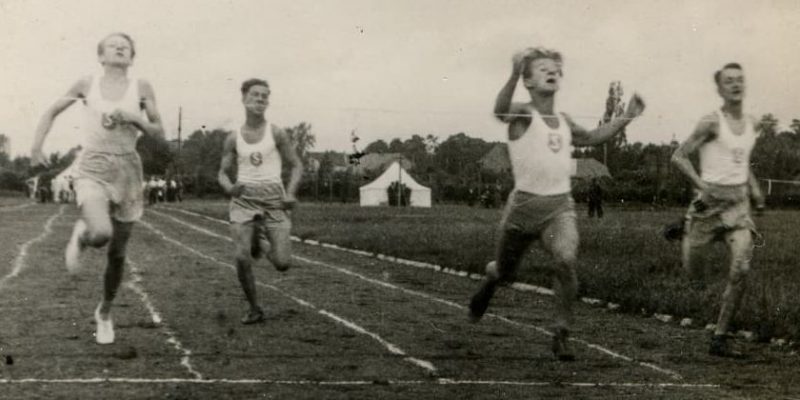We explain the history of athletics, its origin and its development until today. In addition, the track tests that make it up.

What is the history of athletics?
The history of athletics is long, since It is one of the oldest sports disciplines in the world which involves different executions, such as running, jumping, throwing and other combined tests. Many of them were practiced separately, for sporting or practical purposes, from the very beginning of humanity.
The very name of this sport reveals a lot about its origin: the Greek word athletes means “one who competes for a prize”, and comes from aethlos“fight” or “combat”, at the same time athlonname given to the loot or reward (generally amphorae) that was given to the most outstanding combatants in some archaic games contest, and that were usually buried with them.
The first reference to athletics as a sport comes from 776 BC. c from a list of competitors from ancient Greece. At that time was limited to a foot race 197.27 meters long, known as stadiumsupposedly equivalent to 200 times the foot of the mythical hero Heracles (Hercules).
Later the double arose stadium (or dualic), the middle distance race (or equestrian)and long-distance running (or dolic). Furthermore, in the Ancient Greek Olympic Games at the end of the century VIII a. C. the pentathlon emerged, the discipline that combined running, jumping, throwing and wrestling.
Roman culture also practiced athletics under a form similar to the Greek and another more similar to its Etruscan heritage. Thus, they incorporated new practices into this sport. For example, added pole vault, hammer throw and cross-country.
Many of them continued to be practiced during the Middle Ages according to the particular forms of each European Christian kingdom, highlighting England and Denmark among them. Some new disciplines had a military component extremely useful, such as archery, while others were frowned upon, especially during Puritanism, because they usually ended in fights and drunkenness.
Another of the oldest races in medieval Europe was the one held in Rome in the mid-15th century, reproducing Greek athletes and having the athletes compete completely naked, just as in Antiquity.
In 1825 the first modern athletics meeting was held near the English capital. Towards the end of the century, the English vision of sport as a social element spread throughout Europe.
Thus began the union of athletics societies in France, the United States, Belgium and Germany. In this last The first official championship took place in 1891. This organized emergence of athletics in Europe was key to reviving the Olympic Games.
Although from the beginning of the 20th century the professional practice of this sport was almost exclusive to Western Europe and the United States, starting in 1930, African-American athletes, as well as other Europeans from the colonies, stood out in competitions.
After World War II, the communist nations of the Eastern bloc actively participated in the competitions, as a way of reaffirming their presence and power. Around 1970, the Caribbean nations joined, as well as the African countries in 1980, as the world reality, along with that of this sport, became more and more globalized.
See also: History of gymnastics
athletics track events

Athletics is made up of track events which are exercises carried out under controlled conditions, in which athletes can be tested against different physical and mental criteria. The most common track tests are:
- Foot races Consisting, obviously, of a speed and/or resistance race on a flat and limited terrain, it can be of many types: sprint race, long-distance race, cross-country race, hurdle crossing or relay race.
- Athletic walking Of a British invention, it consists of an athletic movement during which at least one foot must always be in contact with the ground, so that it does not involve running or jogging, but rather walking between 20 and 50 kilometers.
- Jumps As the name implies, athletes in this set of tests are expected to jump, whether assisted by a long, flexible pole (pole vault), at the end of a short sprint (long jump), or over a barrier (high jump).
- Releases Again, its name says it all: it involves throwing objects (usually a javelin, a ball or a hammer) using the force of the entire body, whether or not taking an impulse run. Whoever gets his thrown object the furthest will win.
- Decathlon In this category, athletes undergo ten different tests in a row, which are carried out over two days, in a continuous and organized manner. Its women's version, consisting of seven events instead of ten, is known as the heptathlon.
Continue with: History of basketball
References
- “Athletics” on Wikipedia.
- “History of athletics” (video) in the Royal Spanish Athletics Federation.
- “History of athletics” in the Ecuadorian Athletics Federation.
- “Athletics” on ABC Bienestar.
- “Athletics” in The Encyclopaedia Britannica.





